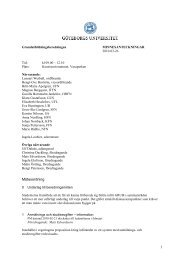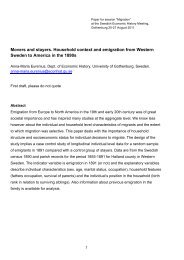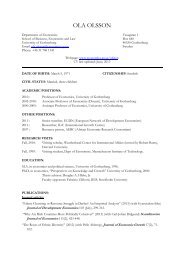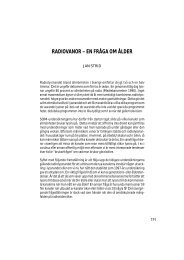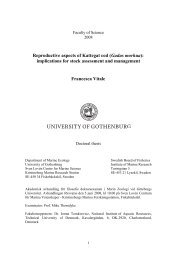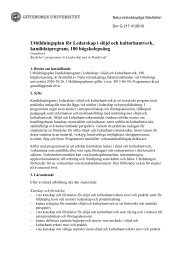Equal Opportunities Work - Theories about Practice
Equal Opportunities Work - Theories about Practice
Equal Opportunities Work - Theories about Practice
Create successful ePaper yourself
Turn your PDF publications into a flip-book with our unique Google optimized e-Paper software.
6. Sexual harassment and the gender perspective<br />
Regarding sexual harassment from a gender perspective (defined as a sex/gender<br />
and power perspective) is rewarding in many ways. Such a perspective sees<br />
sexual harassment as a way for the overrepresented sex to exercise power over<br />
the underrepresented sex, and to keep its members in a subordinate position. The<br />
common denominator is the very idea that sexual harassment entails various<br />
means of exercising power. It is oppression of a member of the underrepresented<br />
sex so that he or she feels insulted, threatened, frightened, humiliated, powerless<br />
and compelled into obedience. As we have seen above, this is not always<br />
intentional, conscious exercise of power, but can just as easily be unintentional<br />
and unconscious.<br />
Sexual harassment often takes place in a situation where power is unevenly<br />
distributed between the sexes, and where the male sex is hierarchically<br />
superior to the female sex. As men tend to be more often in power positions,<br />
they are most often also the ones to commit sexual harassment. Moreover, the<br />
person subjected to the harassment is often in a dependency relation to the<br />
individual doing the harassing, who may be an advisor, a teacher, a supervisor<br />
or someone in a managerial position. These are also often people who are in<br />
the know and whose jobs include helping others to develop and learn. These<br />
individuals are often automatically treated with respect and trust, as well as<br />
sometimes admiration simply by virtue of their positions, and it is easy to take<br />
advantage of such a position.3s<br />
In equal opportunities contexts, the debate around sex/gender has often<br />
focused on the hypothesis that there is a supra-individual level, a "gender<br />
order". One central idea in this context is that the structures a"re stronger than<br />
the individual, and if the individual is replaced, the structures will remain. This<br />
may reveal itself, for instance, in the fact that women in management positions<br />
sometimes also prove to be harassers, as well as men. Quite simply, it is<br />
inherent to the structure for people in managerial positions to behave in a<br />
certain way. A structural gender perspective provides one explanation of how<br />
harassment can be "passed down" at a workplace, that certain ways of acting<br />
and behaving are tied to a particular position.<br />
If an individual is subjected to sexual harassment and brings it up, either<br />
formally or informally, it is common for the management to react by claiming<br />
35 Th"r. may, however, be an element of sexual harassment in other relationships as well, for instance the<br />
harassing party may be the subordinate one, for instance when a students harasses his or her teacher.<br />
41





